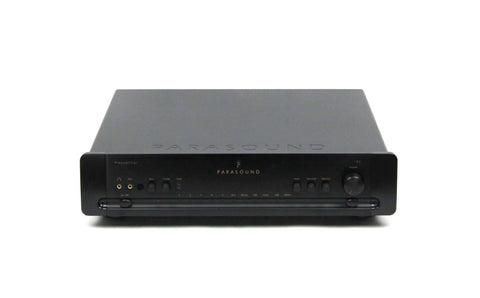

So once the bias point has been achieved, the transition begins. He went on to state that on the (+) line they really beefed things up, so even with that 6 watts class A per channel, the magic is minimizing the crossover point distortion. But that is PER CHANNEL! I thought It was total. I asked him about the bias point on my A21+, and he agreed it was around 6 watts. I think his name was Phil? He was more than happy to talk shop, & answer any and all of my questions regardless of time constraints.

Each time the phone was answered in the first few rings, and I spoke with a gentleman whom was part of the engineering/design team actually in the shop where they test the outgoing products. I have called Parasound directly a couple different occasions after I bought my A21+, just to pick their brains and ask some questions that had come into my mind during the first week of ownership. I have not heard audible distortion of any kind from the amp, at any level I push.

It is this combination that provides low distortion, a slightly warm, yet largely transparent sound and coupled with 16 - 24 or more bipolar transistors for the big power numbers.
Parasound p5 driver#
The Halo line uses JFets on the input stage, Mosfets on the driver stage (JFets for the "voicing", Mosfets to drive the outputs, since the JFets can distort and don't like being driven hard as another member mentioned), and finally Sanken BJTs as the output stage. From any of my speakers (sans subwoofers). Just honest, clean, authoritative and low bass like I hadn't heard before. The Parasound really gave my system the sound signature I was seeking. Jumping in with my own experience, coming from an Emotiva XPA amplified L&R, to a Parasound A21+. They have it to occupy the lower price brackets but they do recommend the Halos if you can afford it.Īccording to the marketing material the Halo line uses Toshiba 2SJ74 J-FETs, on the input stage.

Parasound p5 series#
The non Halo series of Parasound are in a lower tier (in design, component choice and build quality) and would be similar to the above Outlaws in that aspect. If you just want an external amp to escape out of limited AVR amp capabilities, I am not sure dual Outlaw monoblocks wouldn't do the same job either for several hundred dollars cheaper. But if you want an amp you can keep for decades this would be it like most Parasound equipment. Difficult content into difficult speakers is where they are likely to make the most difference. These will be better than any AVR's internal amps for most speakers but like most amps, it is not something that you are likely to say wow necessarily when you hear it. The earlier A23 made some component choices that weren't great and it had some issues. They are very good for driving difficult speaker loads and stable. They seem to build in a lot of protection into their amps. However, the build, reliability and customer service for it is excellent.
Parasound p5 free#
A 23+ can be as low as $1250 free shipping if you wait for it to come into stock.Ī23+ is a cut-down version of the original John Curl A21 design but it does not include all the circuit wizardry of the expensive amps and so that should be taken with a grain of salt.
Parasound p5 full#
First of all, the best way to buy Parasound equipment is via the B-stock (Factory refurb with full warranty, they do a very good job of making sure that it looks brand new and their customer service is excellent if you should have problems) or open-box (customer returns re-boxed but full warranty) at Safe and Sound.


 0 kommentar(er)
0 kommentar(er)
